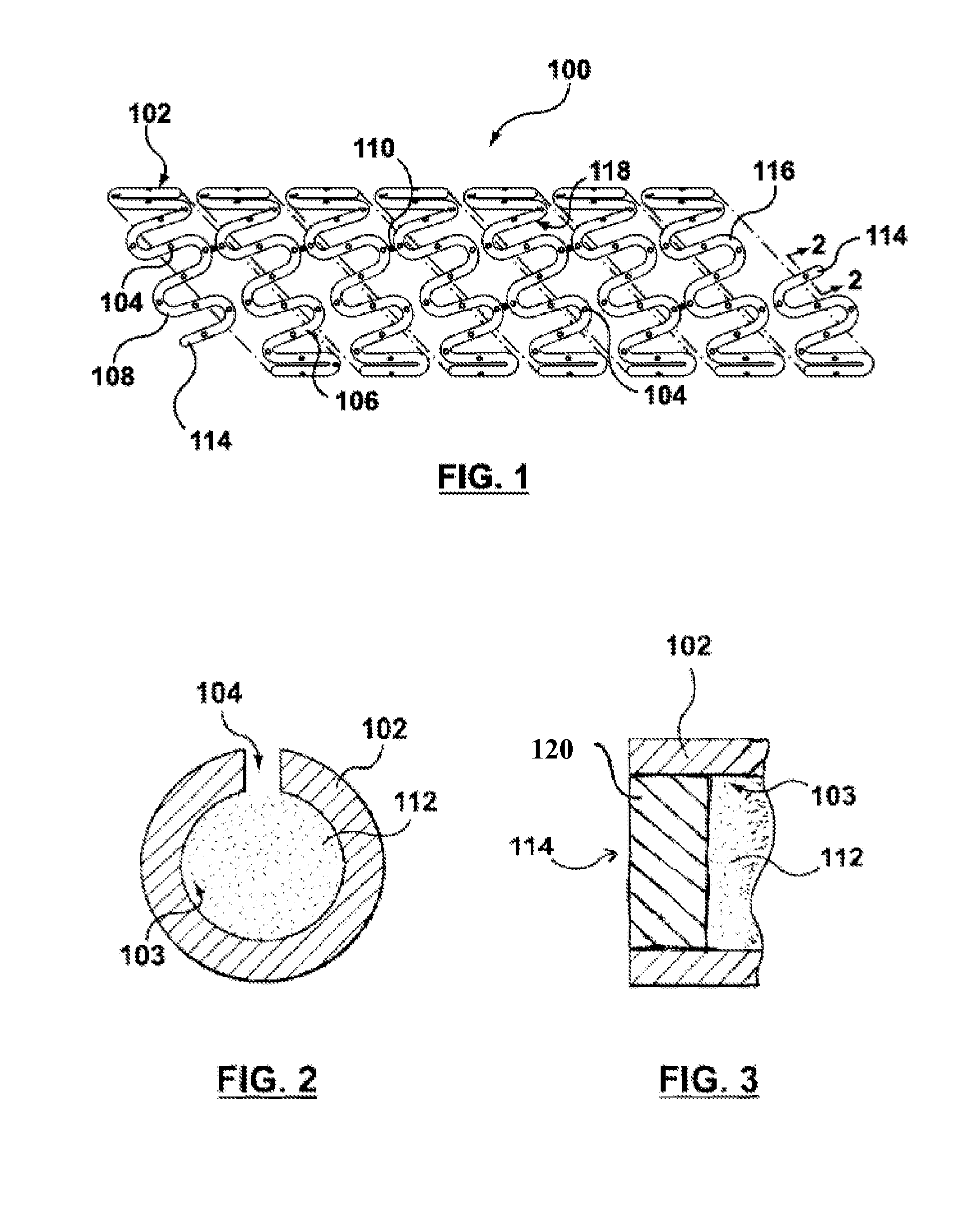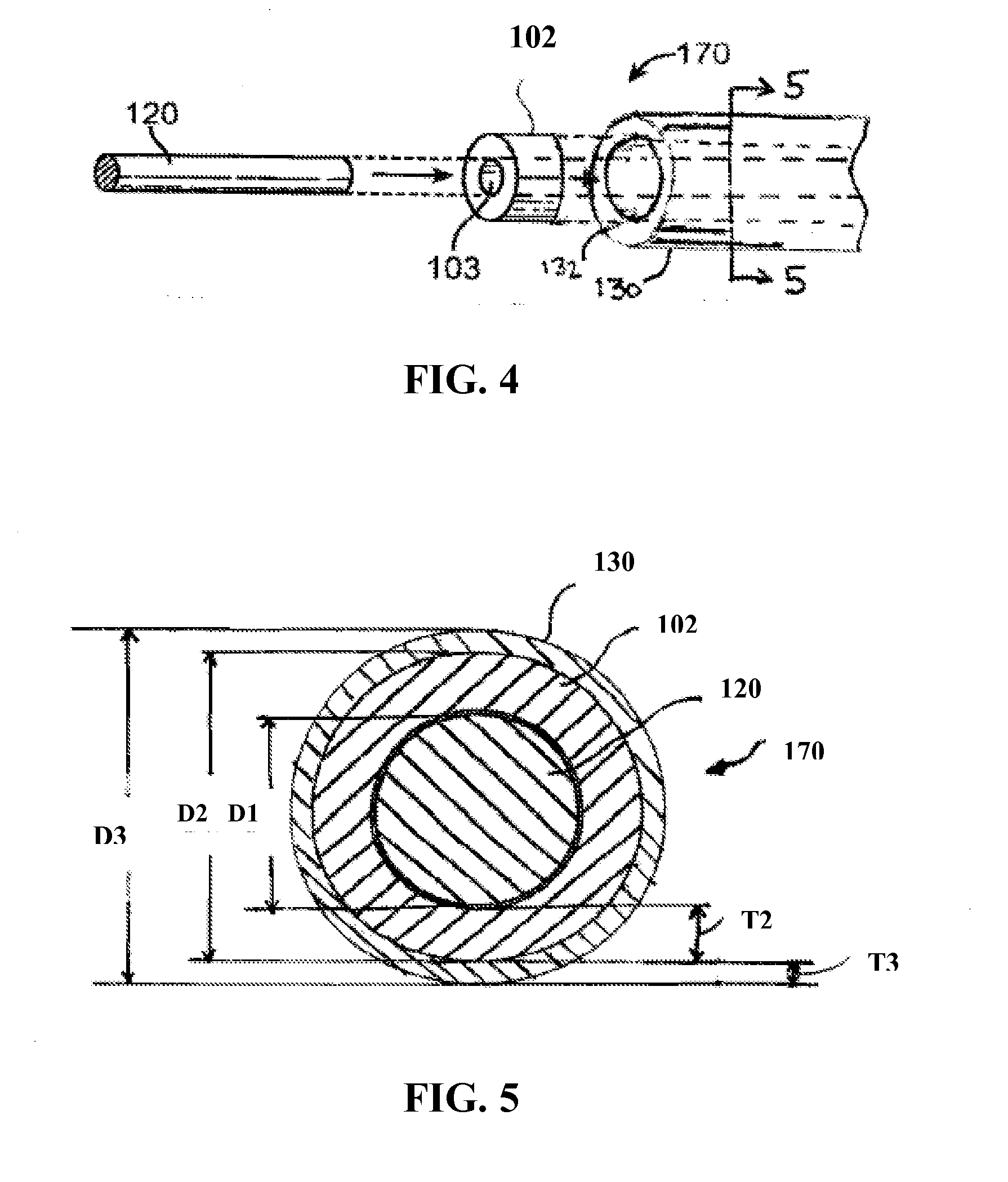Method of forming a nitinol stent
a nitinol wire and stent technology, applied in the field of nitinol wire stent making, can solve the problems of difficult to form to an accurate geometry, difficult to generate a cost effective fixture for simple and complicated stent patterns, and difficulty in the formation of the stent itsel
- Summary
- Abstract
- Description
- Claims
- Application Information
AI Technical Summary
Benefits of technology
Problems solved by technology
Method used
Image
Examples
Embodiment Construction
[0026]Specific embodiments of the present invention are now described with reference to the figures, where like reference numbers indicate identical or functionally similar elements.
[0027]An embodiment of a stent 100 disclosed herein is shown in FIGS. 1-3. In particular, stent 100 is formed from a hollow wire 102, in particular, a hollow nitinol wire 102. The term “wire” as used herein means an elongated element or filament or group of elongated elements or filaments and is not limited to a particular cross-sectional shape or material, unless so specified. In the embodiment shown in FIG. 1, hollow wire 102 is formed into a series of generally sinusoidal waveforms including generally straight segments or struts 106 joined by bent segments or crowns 108. The wire with the waveforms formed therein is helically wrapped to form a tube, as shown in FIG. 1. In the embodiment shown in FIG. 1, selected crowns 108 of longitudinally adjacent sinusoids may be joined by, for example, fusion poin...
PUM
| Property | Measurement | Unit |
|---|---|---|
| body temperatures | aaaaa | aaaaa |
| body temperatures | aaaaa | aaaaa |
| diameter | aaaaa | aaaaa |
Abstract
Description
Claims
Application Information
 Login to View More
Login to View More - R&D
- Intellectual Property
- Life Sciences
- Materials
- Tech Scout
- Unparalleled Data Quality
- Higher Quality Content
- 60% Fewer Hallucinations
Browse by: Latest US Patents, China's latest patents, Technical Efficacy Thesaurus, Application Domain, Technology Topic, Popular Technical Reports.
© 2025 PatSnap. All rights reserved.Legal|Privacy policy|Modern Slavery Act Transparency Statement|Sitemap|About US| Contact US: help@patsnap.com



